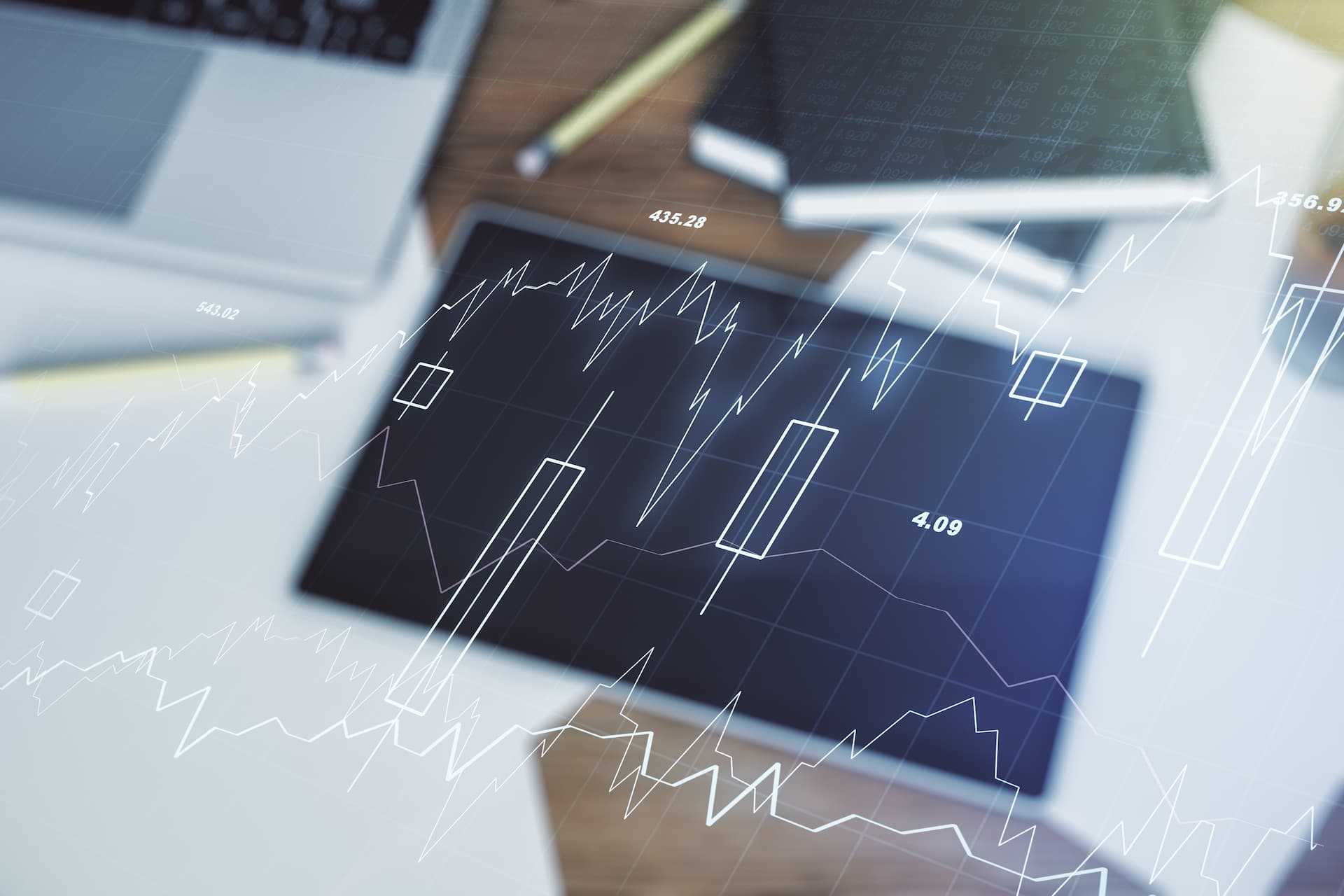Advanced Technical Analysis: Beyond the Basics
This article explores advanced technical analysis techniques, including complex chart patterns, sophisticated indicators, and advanced methodologies that enhance trading strategies and decision-making.

1. Advanced Chart Patterns
Chart patterns are formations created by the price movements of securities. Advanced chart patterns offer deeper insights into market trends and potential reversals, providing traders with more precise signals.
Head and Shoulders Patterns
The head and shoulders pattern is a prominent reversal pattern that indicates a potential change in market direction. The pattern consists of three peaks: a higher peak (head) between two lower peaks (shoulders). A head and shoulders pattern suggests a reversal from an uptrend to a downtrend, while an inverse head and shoulders pattern signals a reversal from a downtrend to an uptrend.
-
Identifying the Pattern:
The pattern starts with a peak (left shoulder), followed by a higher peak (head), and then a lower peak (right shoulder). The neckline, which connects the troughs, acts as a support or resistance level.
Example: A head and shoulders pattern might form when a stock's price rises to a new high (head), pulls back, rises again to a similar high (right shoulder), and then falls below the neckline. -
Trading Strategy:
Enter a trade when the price breaks below the neckline for a head and shoulders pattern or above the neckline for an inverse head and shoulders pattern. Set stop-loss orders just above the right shoulder for a head and shoulders pattern or below the right shoulder for an inverse head and shoulders pattern. -
Chart Pattern Tools:
Use platforms like TradingView to identify and analyze complex chart patterns. TradingView offers advanced charting tools and pattern recognition features that help traders spot head and shoulders patterns and other technical formations.
Double Tops and Double Bottoms
Double tops and double bottoms are classic reversal patterns indicating potential changes in trend direction. A double top suggests a bearish reversal after an uptrend, while a double bottom indicates a bullish reversal after a downtrend.
-
Double Top Pattern:
The double top pattern forms when the price reaches a peak, declines, and then reaches a similar peak again before falling. This pattern suggests that the previous uptrend is ending.
Example: The stock price peaks at $100, declines to $90, and then peaks again at $100 before falling. This suggests a potential reversal from an uptrend to a downtrend. -
Double Bottom Pattern:
The double bottom pattern forms when the price reaches a low, rises, and then reaches a similar low before increasing. This pattern suggests a potential reversal from a downtrend to an uptrend.
Example: A stock price falls to $50, rises to $60, and then falls again to $50 before rising. This indicates a potential reversal from a downtrend to an uptrend. -
Pattern Analysis Tools:
Platforms like MetaTrader 5 (MT5) offer advanced charting capabilities to analyze double tops and double bottoms. MT5 provides tools for precise pattern recognition and analysis.
2. Advanced Indicators and Oscillators
Indicators and oscillators are essential tools for understanding market conditions and predicting future price movements. Advanced indicators offer deeper insights into market dynamics and enhance trading strategies.
Fibonacci Retracement Levels
Fibonacci retracement levels are used to identify potential support and resistance levels based on the Fibonacci sequence. These levels help traders determine possible reversal points and adjust their trading strategies accordingly.
-
Applying Fibonacci Retracement:
To use Fibonacci retracement, identify significant price peaks and troughs on a chart. Draw the retracement levels from the peak to the trough during a downtrend or vice versa. Key Fibonacci levels include 23.6%, 38.2%, 50%, 61.8%, and 76.4%.
Example: During an uptrend, if the price rises from $50 to $100, draw the retracement levels from $50 to $100 to identify potential support levels where the price might reverse. -
Trading Strategy:
Use Fibonacci retracement levels to identify potential entry and exit points. For example, buy near the 38.2% retracement level during an uptrend and sell near the 61.8% level during a downtrend. Combine Fibonacci levels with other indicators for a comprehensive trading approach. -
Fibonacci Tools:
Platforms like TradingView and MetaTrader 5 (MT5) offer tools for drawing and analyzing Fibonacci retracement levels. These platforms provide advanced charting features for accurate analysis.
Elliott Wave Theory
Elliott Wave Theory posits that markets move in repetitive cycles or waves, reflecting changes in investor sentiment. Understanding these waves helps traders forecast future price movements based on historical patterns.
-
Wave Structure:
Elliott Wave Theory identifies five waves in the direction of the trend (impulse waves) and three waves against the trend (corrective waves). The theory suggests that waves form patterns, such as the impulse wave and the corrective wave, which can be used to predict future price movements.
Example: During an uptrend, an Elliott Wave pattern might include five impulse waves followed by three corrective waves, indicating a potential continuation or reversal. -
Application:
Use Elliott Wave Theory to analyze market cycles and forecast future price movements. Combine it with other technical analysis tools, such as moving averages and trend lines, to develop a comprehensive trading strategy. -
Elliott Wave Tools:
Platforms like TradingView offer tools for analyzing Elliott Wave patterns and integrating them into trading strategies. These tools help traders identify wave patterns and apply them to their trading approach.
3. Advanced Candlestick Patterns
Candlestick patterns provide insights into market sentiment and potential price reversals. Advanced candlestick patterns offer more precise signals for traders and can help refine trading strategies.
Complex Candlestick Patterns
Engulfing Patterns
The engulfing pattern consists of two candlesticks where the second candlestick completely engulfs the body of the first candlestick. Bullish engulfing patterns signal potential reversals from a downtrend to an uptrend, while bearish engulfing patterns suggest reversals from an uptrend to a downtrend.
-
Identifying the Pattern:
The pattern starts with a small candlestick followed by a larger candlestick that completely engulfs the previous one. The engulfing pattern indicates a shift in market sentiment and potential reversal.
Example: In a downtrend, a small bearish candlestick followed by a larger bullish candlestick that fully engulfs the previous one suggests a bullish reversal. -
Trading Strategy:
Enter a trade when the price confirms the engulfing pattern by moving in the direction of the reversal. Set stop-loss orders just beyond the opposite end of the engulfing candlestick to manage risk. -
Candlestick Analysis Tools:
Platforms like MetaTrader 5 (MT5) provide advanced candlestick pattern recognition tools for accurate analysis. These tools help traders identify and analyze engulfing patterns and other complex candlestick formations.
Doji Patterns
A Doji candlestick indicates market indecision, where the opening and closing prices are nearly equal. Doji patterns can signal potential reversals or continuation patterns depending on their context.
-
Doji Variants:
Different types of Doji patterns include the Dragonfly Doji, Gravestone Doji, and Four-Price Doji. Each variant has specific implications for market sentiment and potential price movements.
Example: A Dragonfly Doji at the end of a downtrend suggests a potential reversal to the upside, while a Gravestone Doji at the end of an uptrend indicates a potential reversal to the downside. -
Trading Strategy:
Use Doji patterns in conjunction with other technical analysis tools, such as support and resistance levels, to confirm potential reversals or continuation patterns. Analyze the preceding price action and context for accurate trading signals. -
Doji Pattern Tools:
Utilize platforms like TradingView to identify and analyze Doji patterns with advanced charting and pattern recognition tools. These tools help traders assess market sentiment and potential price movements.
4. Integrating Volume Analysis
Volume analysis provides insights into the strength of price movements and market participation. Advanced volume analysis techniques enhance trading strategies and decision-making by evaluating the relationship between price and volume.
Volume-Price Analysis
Volume-price analysis examines the relationship between price movements and trading volume. High volume during price increases indicates strong buying interest, while high volume during price declines suggests strong selling pressure.
- Volume Indicators:
Use volume
indicators such as On-Balance Volume (OBV) and Volume Price Trend (VPT) to analyze the relationship between volume and price movements. These indicators help confirm trends and potential reversals.
Example: An increase in volume accompanied by a price breakout from a consolidation pattern suggests a strong trend continuation. Conversely, a price breakout on low volume may indicate a false signal.
-
Trading Strategy:
Incorporate volume analysis into trading strategies to confirm price movements and identify potential trend reversals. Analyze volume patterns in conjunction with price action and other technical indicators for more accurate signals. -
Volume Analysis Tools:
Platforms like MetaTrader 5 (MT5) offer volume analysis tools and indicators to enhance trading strategies. These tools help traders evaluate volume patterns and their impact on price movements.
Volume Oscillators
Volume oscillators measure the difference between two volume-related indicators, providing insights into changes in trading activity and potential trend shifts.
-
Volume Oscillator Indicators:
Use indicators such as the Chaikin Money Flow (CMF) and Accumulation/Distribution (A/D) line to analyze volume trends and their impact on price movements.
Example: The Chaikin Money Flow (CMF) indicator combines price and volume to assess the overall flow of money into or out of a security. A positive CMF value indicates buying pressure, while a negative value suggests selling pressure. -
Trading Strategy:
Use volume oscillators to confirm price trends and identify potential reversal points. Analyze changes in volume oscillators in conjunction with price patterns and other technical indicators for a comprehensive trading approach. -
Oscillator Tools:
Platforms like TradingView provide advanced volume oscillator tools and indicators for detailed analysis. These tools help traders assess volume trends and their impact on price movements.
By incorporating these advanced technical analysis techniques into your trading strategy, you can gain a deeper understanding of market dynamics and enhance your decision-making process. Utilize advanced chart patterns, indicators, candlestick patterns, and volume analysis to develop a comprehensive trading approach that aligns with your trading goals and risk tolerance.
TAGS
Latest Education Articles
Show more
Earnings Reports and Equity CFDs

Trend vs. Range Strategies

Trading Breakouts vs. Pullbacks

Hedging Basics for Intermediate Traders
Take your trading to the next level.
Join the broker built for global success in just 3 easy steps. A seamless experience built for traders who value speed and simplicity.

Create Your Account

Make Your First deposit
